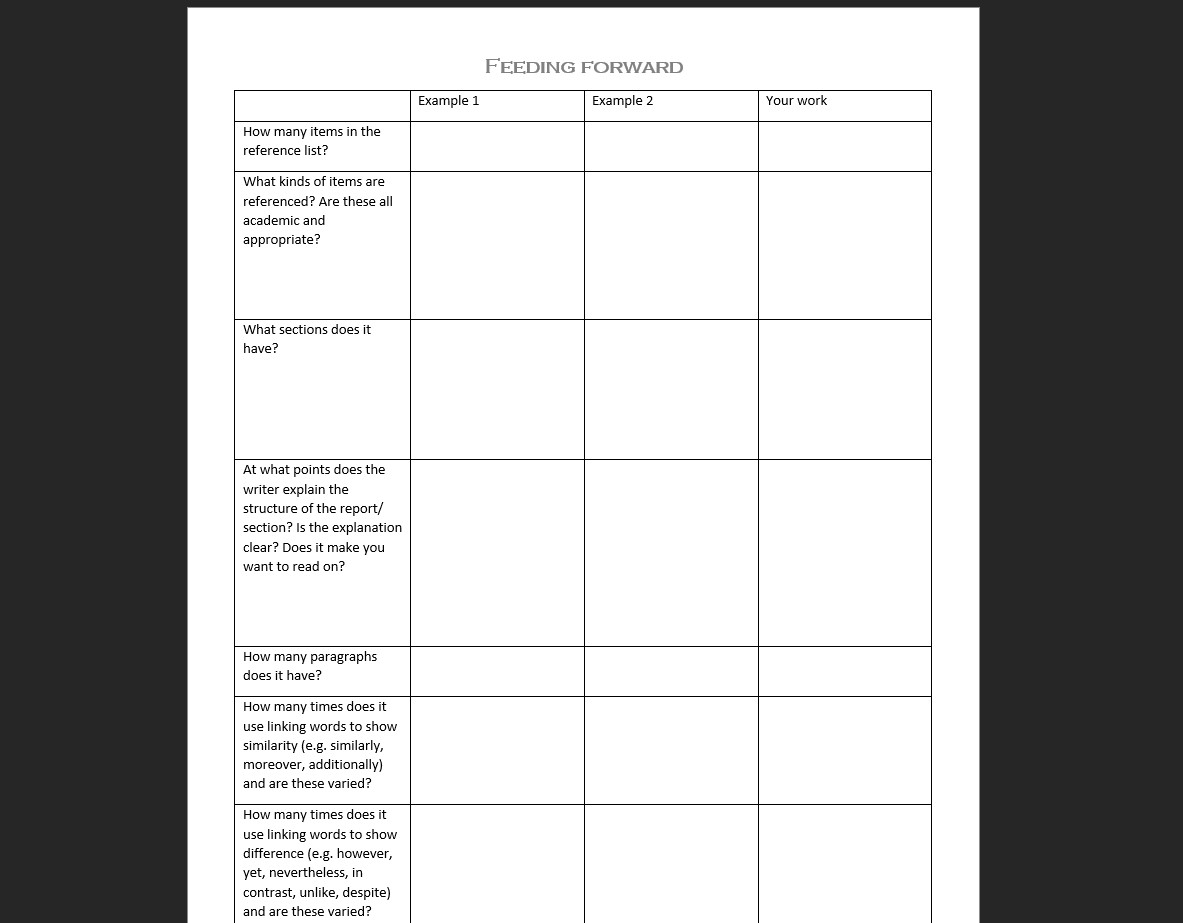This is a worksheet to be used to structure the examination of the writing in example assessments. Rather than just allowing students to read through examples to see what they observe, this scaffolds their interpretation of different approaches to the writing of an assessment, by giving them specific things to look at or comment on.
In my version, there is space to answer questions about the writing in two examples and a students’ own assessment. This activity would involve feed-forward, and a student learning from comparing their assessment with the examples to provide their own feedback actions. It could easily be adapted to just look at examples prior to a student writing their assessment.
There are a range of questions, from straightforward to more complex. This is intended to be used in the context of a discussion of the answers (e.g. to discuss with students that there is no single correct number of references, but some writing might under or over use sources). The filling out of the sheet could either be done in class, or before class.
Specific resources needed for implementing this resource:
Examples of an assessment written by other students
Contributor’s comments on the use of this resource:
This was used for looking at a particular assessment. All specific references to the content of that assessment have been removed, but the questions may need to be altered or adapted depending upon the type of assessment.



Reviews
There are no reviews yet.